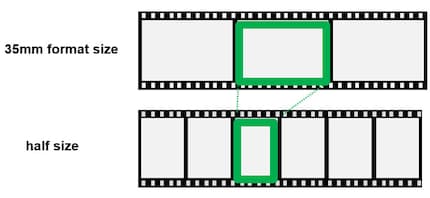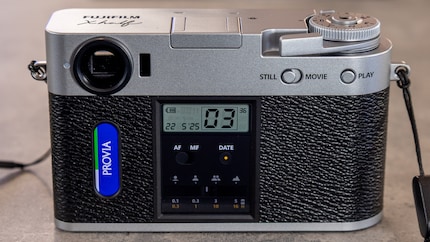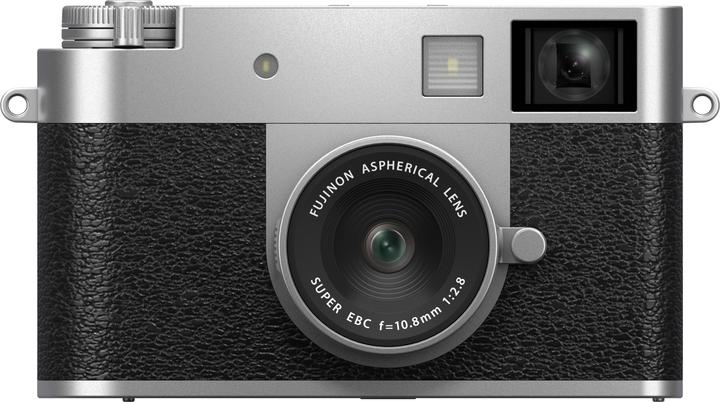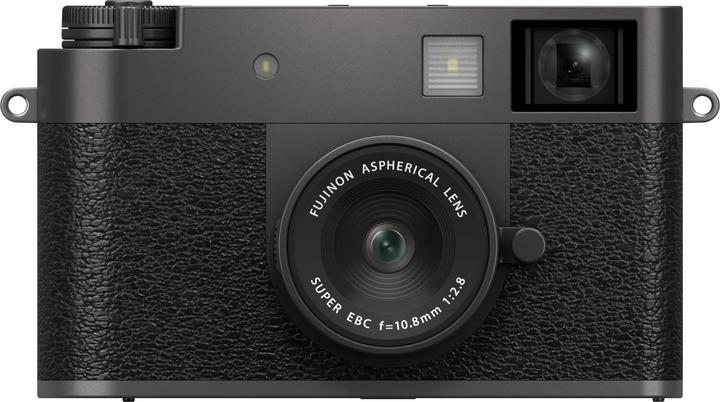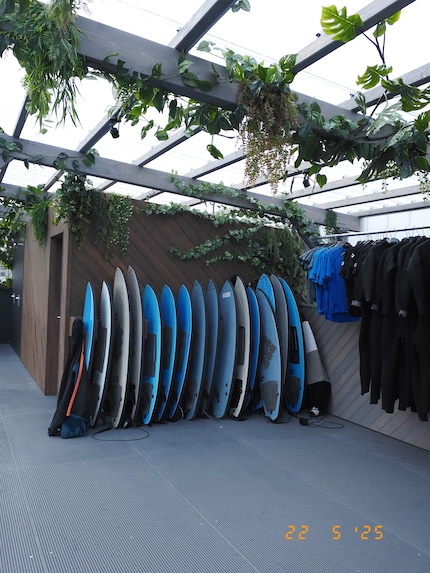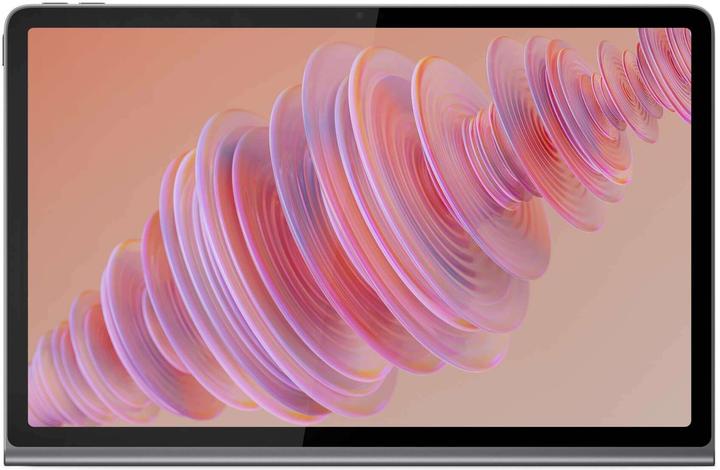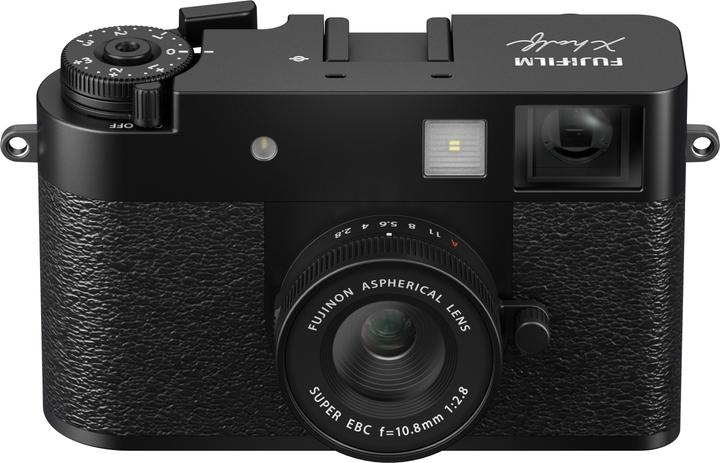
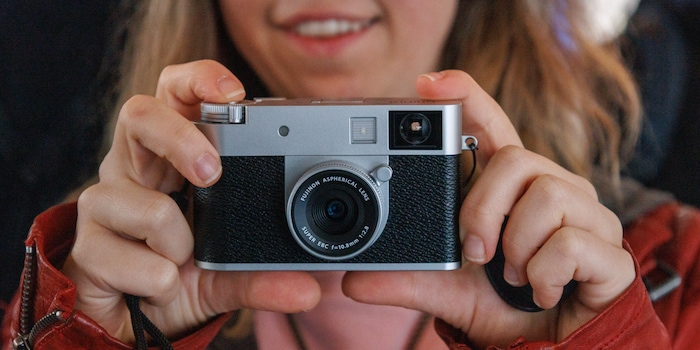
Fujifilm X-HF1: The most analogue digicam in the world
With the new X-HF1, Fujifilm is taking the retro feeling to the extreme. However, after trying it out for the first time, it's not clear to me who really wants this camera.
Fujifilm has long set itself apart from the mainstream with unusual concepts. Retro plays an important role in this. However, the manufacturer has never realised the retro feeling as consistently as with the new Fujifilm X-HF1.
The X half, as it is also known, is a digital camera designed to make photography feel as analogue as possible. Just like an old camera with a film roll, there is a lever for transporting the film. The viewfinder is optical, i.e. simply a peephole. If it is used consistently, the battery lasts for 880 photos according to the CIPA standard - a good value.
As the name suggests, the X half simulates an analogue half-format camera. These cameras use the usual film rolls for 35 mm 35mm cameras, but expose them in portrait format instead of landscape format. This means that the negative is half the size of a 35 mm camera. Pentax launched a «true» half-format camera last year - the Pentax 17.
Consequentially, the screen is also upright and therefore only 2.4 inches in size. Be glad that the camera has a screen at all. A real analogue camera doesn't have one. In fact, there is a film camera mode in which you can only view the images when the inserted film roll is full.
Roll of film? Yep. It's virtual, but works like a real one. You choose a film type such as Superia or Fujicolor C200 and a size, such as 52 shots. The following 52 photos are then fixed to this image style. The film is displayed in a small window, just like with a real analogue camera. Except that the window is a digital screen. In film camera mode, the transport lever must be operated after each photo.
In normal mode, the images are immediately visible, the transport lever does not need to be operated and the image style can be changed. The «inserted» film can be changed by swiping up or down.
Retro feel takes precedence over quality
On another point, however, Fujifilm shows no mercy: The camera does not deliver raw data. Only JPEG. Many will not like this, but it is consistent. The film simulations generally only work in JPEG - in RAW format they are lost and have to be reconstructed. And with a real analogue camera, I commit myself when I use a film. This is also the case to a certain extent with JPEG.
In any case, the X half is not designed to take technically perfect pictures. On the contrary. Filter effects such as light leaks, expired film or grain give the images a special analogue look. These are actually technical shortcomings of an analogue camera.
The built-in sensor with 18 megapixels is also not designed for the highest quality. It is simply too small for that. At 8.8×11.7 millimetres, it roughly corresponds to the 1-inch sensor of a Sony RX100, but in 4:3 format. Two 4:3 photos can be combined directly in the camera to form a double image, which then has a 3:2 format.
The lens is a fixed focal length with an aperture of f/2.8 and an image section corresponding to 32 millimetres in full format. There is a dedicated app for the X-HF1 and the camera comes in three colour variants. It is expected to be available from 12 June 2025.
First impression
I was able to try out the camera for just under half an hour at a Fujifilm event. The cute little thing is extremely light and handy. 240 grams and 10.5 cm long according to the data sheet. The operation is very different from other cameras. Buttons and wheels are largely absent, settings are activated by swiping on the touchscreen, similar to a DJI Osmo Pocket.
The transport lever doesn't feel real to me: it has too little and regular resistance. I wouldn't use the film mode with this camera anyway, as I want to see how the film simulations work.
On the positive side: The camera makes me shoot a lot more in portrait format, and 4:3 is a good format for that.
This is certainly not a camera for everyone. Exactly who it is for remains unclear to me. Fujifilm is obviously targeting young adults who are fascinated by analogue photography. However, at 698 francs or 799 euros, the device seems a little expensive to me for this target group.
My interest in IT and writing landed me in tech journalism early on (2000). I want to know how we can use technology without being used. Outside of the office, I’m a keen musician who makes up for lacking talent with excessive enthusiasm.
From the latest iPhone to the return of 80s fashion. The editorial team will help you make sense of it all.
Show all